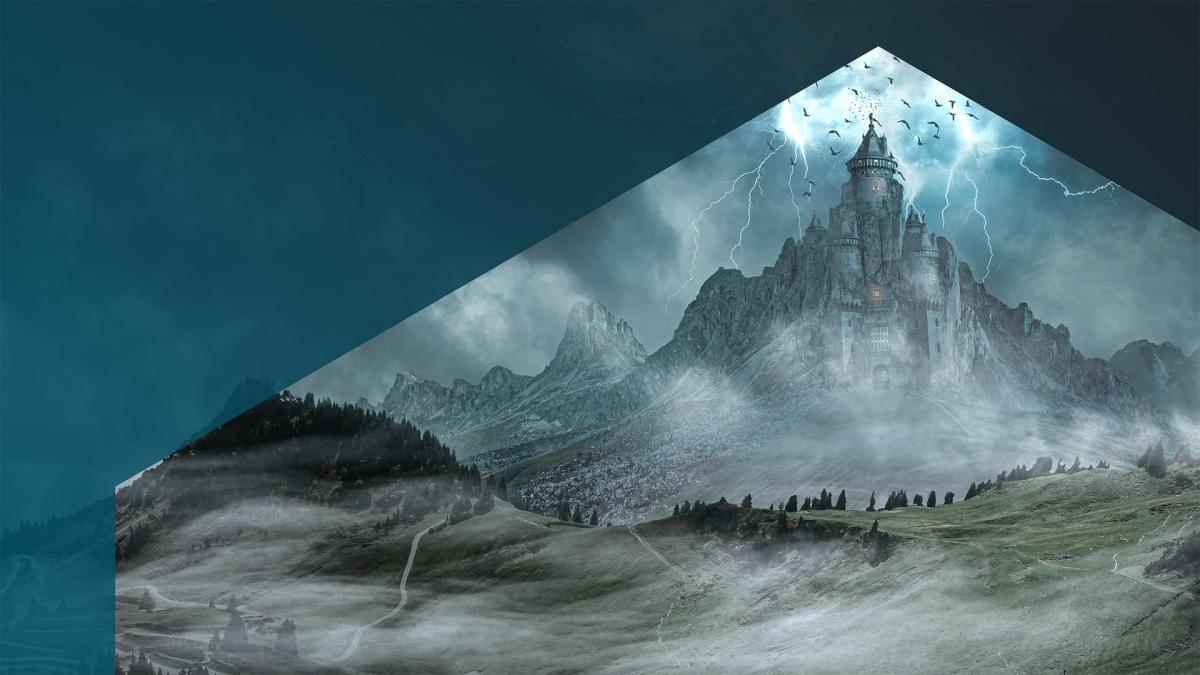
It’s a dangerous business, Frodo, going out your door. You step onto the road, and if you don’t keep your feet, there’s no knowing where you might be swept off to.
In a previous blog, I discussed the IT career lessons I found secreted within the Amazon series The Rings of Power. Like the series itself, the post experienced a positive reception but suffered from comments from a core group of Tolkien purists, who felt I had overlooked, underappreciated, and generally disrespected the original source material. As a lifelong fan of the books, I couldn't let this stand.
And so, in this blog, I'm going to share with you some of the lessons about working as an IT practitioner which can be found within the pages of The Hobbit, The Lord of the Rings (LOTR), and the Silmarillion. Of course, 1847 pages of material (give or take, it depends on the edition and year of printing) is a lot of ground to cover—as much as the distance from the Shire to the fiery forge of Mount Doom. And so I'm going to list the observations that leap out at me off the pages, but you are welcome to add your own in the comments on social media.
Solutions do not travel as the eagle flies
A longstanding question (and conspiracy theory) in the LOTR series concerns the eagles. Over the years, many have wondered why Frodo and the rest of the Fellowship simply didn't fly straight from Rivendel to Mount Doom and toss in the ring. Moreover, conspiracy-minded fans say this was precisely what Gandalf intended, as evidenced during his fight with the Balrog when he shouted, "Fly, fools!" to the rest of the group. Often, questions like this remain unanswered, leaving fans to speculate on the author's intent. This is not one of those cases. In an interview that you can listen to Professor Tolkien himself gives the definitive answer: "Shut up."
But allow me to elaborate on J.R.R.'s behalf: Yes, it's a valid solution. It's both feasible within the context of the world and within the realm of things the characters might have chosen to do. But if they did so, there wouldn't have been a story to tell. And sometimes, we have to accept that characters make choices to serve the needs of the author.
But this viewpoint offers up a lesson we who work in IT can take to heart: There will be many times that we realize that we did things the hard way. It may even be that we chose the hardest of all possible options. And frustratingly, that realization hits us in retrospect (or, worse, is called out by someone during a retrospective). It's easy in those moments to wish for a do-over, to desperately wish we could go back and rewrite the narrative.
And the lesson here is: don't. Don't regret the choices you made because ultimately they led to the adventures you had. The journey may have been harrowing, painful, and unsettling. But it's yours. Don't regret that, in retrospect, you did it the hard way. That's how we get adventures. It's also how we learn.
Compelling truth can defeat persistent fear
So many of the IT lessons I've found in unexpected places—from life lessons in Logan to sysadmin tricks in Into the Spider-verse—were (or at least felt) clear-cut and decisive. This one is much less so. I'll be interested to read your thoughts on this in the comments or on social media.
In the middle of The Two Towers, the second book in the LOTR trilogy, we meet Théoden, the king of Rohan, who is being advised by Gríma, also called Wormtongue. This sequence may be where the LOTR narrative is at its most unsubtle. It's instantly clear to everyone (except Théoden himself) that Gríma is the embodiment of greed, avarice, deceit, and treachery. More than any other character, Gríma comes off as a comic book caricature of a villain.
However, I'll be the first to admit there have been times during my career when I've been at a loss to understand how executives fell for the obviously false fear, uncertainty, and doubt sowed by consultants, vendors, or analysts whose primary intent was clearly (or so it seemed to me and my colleagues) to line their own pockets.
In those moments, I was struck by the almost overwhelming difficulty of getting my leadership back onto the path of truth. This is why I turned with hope, though tempered with a healthy dose of skepticism, to Gandalf's reaction to see if any lessons could be learned.
Before I go too deep into this section, I'll be honest and admit that what I found is a mixed bag. Most of us cannot call thunder down from the skies, or throw off our cloaks to proclaim we are now Gandalf (or Randolph. Or Leon.) the White. And it's rare that the toxic influences in the C-suite come from a single bad actor who can be cowed into revealing their true motives, then driven off, spitting and cursing.
But despite these limitations, there are some things in this chapter we can take to heart.
First, and before any of the events of this chapter come into play, Gandalf has built a reputation over the years. His authority and expertise are known, both in Rohan and elsewhere. In this, we can learn the true benefit of both consistency and competence. A good reputation can do some of the heavy lifting for us, before we even enter the room.
As the chapter opens, Gandalf is calm but assertive. He refuses to be turned away at the door, he insists on having an audience with Théoden because he's not only personally convinced but also convinces others that the information he needs to share is significant.
In that same scene, he also sets clear boundaries. When asked to relinquish his weapon, he does so without argument. When asked to give up his staff, which, in Gandalf's hands, we know to be far more effective a weapon than the sword Glamdring, he pushes back. He understands which tools will serve him in the upcoming confrontation, and which won't, and ensures he has the proper tools at his side. In our world, those tools usually take the form of data, but not raw data. It has to be presented in a coherent way so that it becomes information, which in turn drives action.
The next lesson is less clear in the narrative of the book, but we can quickly understand in the real world—neither Wormtongue's lies nor Gandalf's truth take hold instantly. They're only effective when repeated and reinforced over time. For us in IT, it's important to realize that there is no one quarterly report, status update, or email that is going to make your case. Nor are you going to counter months of misinformation in a single PowerPoint presentation. More likely it will be the consistent and persistent repetition of the same facts, bolstered by data, that will eventually turn people's heads.
Gandalf uses another tactic that is effective in the real world: he asks others to put words into action. As Rohan prepares for battle, Gríma seems to imply he would go out to battle, but, for vague reasons, cannot. Finally, Théoden hands him a sword and offers him a place in the royal company. At that moment Gríma's backpedaling becomes even more apparent.
For us, the lesson is that if someone is making claims, whether positive or negative, the next reasonable step is to ask for proof and action. Show where the underlying data came from. Ask what this person will actively do to capitalize on the benefit or mitigate the risk. And so on.
My last observation for this challenging chapter is that we should never allow people to take from us the tools we need. I alluded to this earlier with Gandalf's sword and staff, but there's another moment that is subtle but remarkable.
Háma knelt and presented to Théoden a long sword in a scabbard clasped with gold and set with green gems. 'Here, lord, is Herugrim...,' he said. 'It was found in his chest. Loth was he to render up the keys. Many other things are there which men have missed.
Gríma had not only been whispering lies and sowing distrust, he'd been taking away the tools people needed to validate his claims. Whether your tools are data, or solutions that allow you to gather and process that data, make sure you continue to have use of them in the course of your conversations, especially when you are faced with a challenge to what you know to be right.
“It’s the job that’s never started as takes longest to finish.”
While this blog is nowhere near as long as the series that inspired it, nevertheless it will take more than one post to reach a satisfying conclusion. And so I beg just a little more patience of you, that you would return here once more, and read the second (and last) part of my story.
Until our paths cross again…
Las opiniones expresadas en este blog son las del autor y no reflejan necesariamente las opiniones de New Relic. Todas las soluciones ofrecidas por el autor son específicas del entorno y no forman parte de las soluciones comerciales o el soporte ofrecido por New Relic. Únase a nosotros exclusivamente en Explorers Hub ( discus.newrelic.com ) para preguntas y asistencia relacionada con esta publicación de blog. Este blog puede contener enlaces a contenido de sitios de terceros. Al proporcionar dichos enlaces, New Relic no adopta, garantiza, aprueba ni respalda la información, las vistas o los productos disponibles en dichos sitios.



